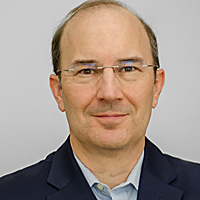Published on TVNewscheck here
Most engineers feel the cloud isn’t quite ready to handle the dynamic nature and complex timing requirements of local stations, which frequently go live, and concerns linger over centralizing their content in cloud storage in case of connectivity failures or other emergencies. Pictured: Encompass provides multichannel playout services from its operations centers in Atlanta, London and Singapore.
Published on TVNewscheck By Glen Dickson | August 10, 2023 | 10:00 a.m. ET.
In a broadcast world undergoing rapid change due to advances in IP distribution and public cloud technology, one old-school technology model persists. That is a practice called “hubbing,” also known as “centralcasting,” in which a station group streamlines its operations by consolidating master control equipment and personnel in centralized or regionalized technical centers that support multiple stations.
Hubbing dates all the way back to 1999, when now-defunct Ackerley Group launched its “digital centralcasting” clusters to centralize master control, traffic and accounting functions. Over the past two decades a number of major station groups followed, including the NBC-owned stations which first created their own hub in 2000 and then in 2009 shifted to an outsourced model with Encompass Digital Media in Atlanta; the ABC-owned stations, which moved to Encompass in 2014; and E.W. Scripps and Tegna, which built their own on-premises regionalized and centralized facilities, respectively, to handle master control functions. (Both NBC and ABC stations have subsequently left Encompass to run in-house master control hubs.)
…
Ingest As A First Step Into Cloud
Beyond centralizing playout and reducing headcount, one of the biggest side benefits of hubbing for groups has been the “de-duplication” of tasks like the content prep and QC of syndicated programming and commercials through the centralization of content ingest, preparation and ingest.
“If I have 26 stations in my group that all carry Wheel of Fortune, granted we don’t prep tape anymore, but there’s still a QC function,” Bitcentral’s Peterson says. “I do that one time instead of 26 times. That’s still a benefit in pooling that work together and doing the same work for multiple stations at one time with one group of people, with one pool of equipment and/or resources.”
Nexstar has centralized those ingest and content prep functions with on-premises hardware at its regional hubs, while Sinclair has created similar functionality with its “content pipeline” in the AWS cloud. As he looks towards the next big hubbing trend, Diversified’s Kornweiss thinks that more groups will follow Sinclair’s lead and turn to the cloud to streamline their ingest functions while most playout remains on-prem for the near term.
“The cloud is really the catalyst for the ingest consolidation,” Kornweiss says. “For master control technology, ingest in the cloud is really the driving factor, more so than playout right now. Playout is a very real thing in the cloud for very specific applications, and we’re seeing improvement in that space. But ingest is a slam dunk, for lots of reasons. You’ll have operator workstations on premise and they’ll hit a shared storage center that’s agnostic to wherever your playout facility lives.”
Read the full article on www.tvnewscheck.com/Bitcentral
